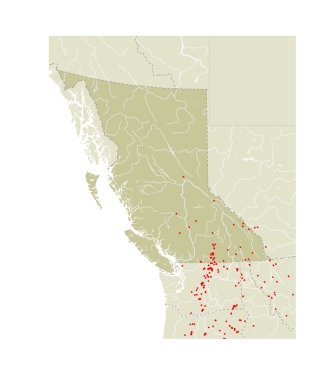The Thicket Hairstreak flies from late April to mid-July, depending on elevation, snow melt, and how soon warm weather begins. Lab-reared specimens emerge throughout the winter if kept at warm temperatures (FIS). Eggs are laid and development is completed the same summer, with the butterfly overwintering as a pupa. Adults are seen only when they come down from the tops of the mature trees to obtain nectar, and are not often seen. The larvae are dependent on mistletoes growing on mature ponderosa pine, and are therefore threatened by logging pressure and suburban development, especially since a large portion of the habitat for ponderosa pine is on private land. Forest industry mistletoe eradication policies may eventually result in the Thicket Hairstreak becoming of conservation concern.
Larvae feed on all mistletoe species of the genus Arceuthobium, primarily when they parasitize pines (Pinus) but also on Abies spp. (Remington 1958; Shields 1966) and Douglas-fir (CSG). The only specific foodplant for BC is Arceuthobium americanum at 100 Mile House (FIS). Ponderosa pine is the normal host of the mistletoe larval foodplant, but occasionally populations of the Thicket Hairstreak exist on mistletoes growing on Douglas-fir, larch, or true fir (Pinaceae).
|
|
